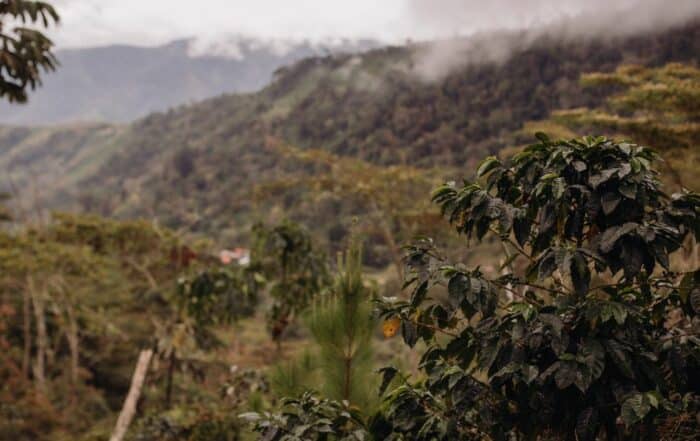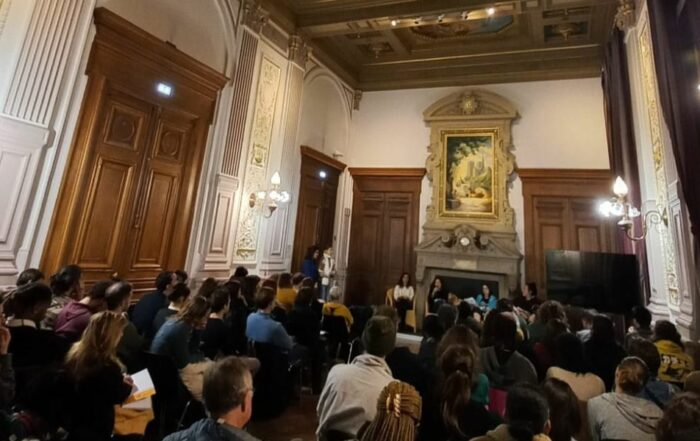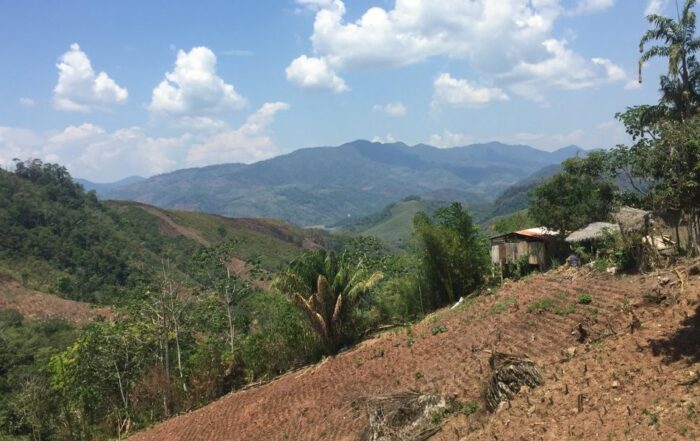Peru is one of the world’s leading cocoa-producing countries and one of the cradles of the crop. Many species and varieties are native from Peru. However, Peruvians consume very little chocolate and the industry is still underdeveloped: the vast majority of cocoa beans are exported and processed in Europe or in the United States. This is due to the global markets and their organization, but also to the lack of knowledge of how to make quality chocolate.
Mateo Cosnefroy, an agronomist and chocolate maker, and former Envol Vert volunteer, was in Peru in November 2021 and agreed to share his experience with our local allies. After working for a cocoa cooperative in the San Martin region, Mateo decided to develop his own chocolate factory. Through his experience, he has become aware of the importance of the quality of the bean to make a superior quality chocolate.
![[AGROCACAO]formation Mateo,Cosnefroy_NOV2021_M.CORREIAWEB](https://da1323dc.delivery.rocketcdn.me/wp-content/uploads/2022/01/AGROCACAOformation-MateoCosnefroy_NOV2021_M.CORREIAWEB.jpg)
For the Envol Vert teams, the objective is twofold. To learn more about the production of aromatic cocoa and to bring together local actors (cooperatives, municipalities, NGOs, public development project managers, technicians and engineers, chocolate makers and entrepreneurs). Thus, having the opportunity to share each other’s experience and develop new skills together.
We discover for example that in order to create a high quality chocolate every step of the production process is important. Within the plot, agroforestry systems will create an ecosystem favorable to the production of cocoa and will limit the development of certain diseases; all the post-harvest work stages such as drying and fermentation must be carried out according to specific conditions and a precise duration. Finally, the roasting is a very delicate stage that determines the final quality of the chocolate.
The theoretical training concludes with a tasting of different roasted beans. We learn to identify the flavors of good and bad fermentation. This step is often neglected, but it has an impact on the production of chocolate. In addition, we were able to taste a chocolate made without cocoa butter. A great discovery for Peruvian chocolate makers.
To find out more, do not hesitate to listen to the podcast “Episode #5 – Matéo Cosnefroy, the chocolate agronomist” (in French) where Mateo talks about his training: aromatic cocoa: from the farm to the plate.
Peru is one of the world’s leading cocoa-producing countries and one of the cradles of the crop. Many species and varieties are native from Peru. However, Peruvians consume very little chocolate and the industry is still underdeveloped: the vast majority of cocoa beans are exported and processed in Europe or in the United States. This is due to the global markets and their organization, but also to the lack of knowledge of how to make quality chocolate.
Mateo Cosnefroy, an agronomist and chocolate maker, and former Envol Vert volunteer, was in Peru in November 2021 and agreed to share his experience with our local allies. After working for a cocoa cooperative in the San Martin region, Mateo decided to develop his own chocolate factory. Through his experience, he has become aware of the importance of the quality of the bean to make a superior quality chocolate.
![[AGROCACAO]formation Mateo,Cosnefroy_NOV2021_M.CORREIAWEB](https://da1323dc.delivery.rocketcdn.me/wp-content/uploads/2022/01/AGROCACAOformation-MateoCosnefroy_NOV2021_M.CORREIAWEB.jpg)
For the Envol Vert teams, the objective is twofold. To learn more about the production of aromatic cocoa and to bring together local actors (cooperatives, municipalities, NGOs, public development project managers, technicians and engineers, chocolate makers and entrepreneurs). Thus, having the opportunity to share each other’s experience and develop new skills together.
We discover for example that in order to create a high quality chocolate every step of the production process is important. Within the plot, agroforestry systems will create an ecosystem favorable to the production of cocoa and will limit the development of certain diseases; all the post-harvest work stages such as drying and fermentation must be carried out according to specific conditions and a precise duration. Finally, the roasting is a very delicate stage that determines the final quality of the chocolate.
The theoretical training concludes with a tasting of different roasted beans. We learn to identify the flavors of good and bad fermentation. This step is often neglected, but it has an impact on the production of chocolate. In addition, we were able to taste a chocolate made without cocoa butter. A great discovery for Peruvian chocolate makers.
To find out more, do not hesitate to listen to the podcast “Episode #5 – Matéo Cosnefroy, the chocolate agronomist” (in French) where Mateo talks about his training: aromatic cocoa: from the farm to the plate.






